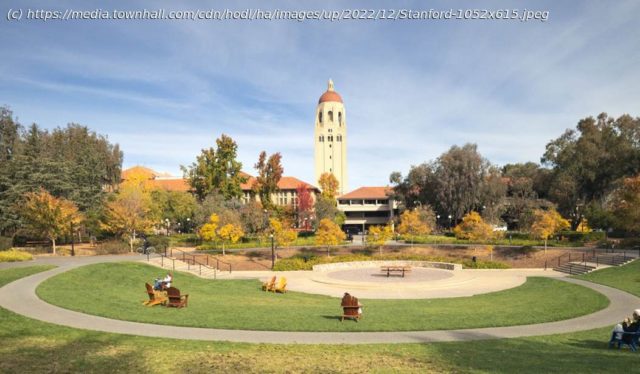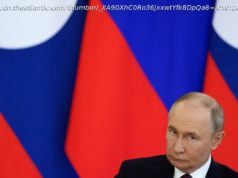Array
Just over a year ago a Stanford undergrad wrote a story for the Atlantic about what it was like to be on campus in the wake of Hamas‘ 10/7 attack on Israel. David wrote about it here at the time but in case you missed it, here’s a sample of what Theo Baker wrote.
One of the section leaders for my computer-science class, Hamza El Boudali, believes that President Joe Biden should be killed. “I’m not calling for a civilian to do it, but I think a military should,” the 23-year-old Stanford University student told a small group of protesters last month. “I’d be happy if Biden was dead.” He thinks that Stanford is complicit in what he calls the genocide of Palestinians, and that Biden is not only complicit but responsible for it. “I’m not calling for a vigilante to do it,” he later clarified, “but I’m saying he is guilty of mass murder and should be treated in the same way that a terrorist with darker skin would be (and we all know terrorists with dark skin are typically bombed and drone striked by American planes).” El Boudali has also said that he believes that Hamas’s October 7 attack was a justifiable act of resistance, and that he would actually prefer Hamas rule America in place of its current government (though he clarified later that he “doesn’t mean Hamas is perfect”). When you ask him what his cause is, he answers: “Peace.”.
During a mandatory freshman seminar on October 10, a lecturer named Ameer Loggins tossed out his lesson plan to tell students that the actions of the Palestinian “military force” had been justified, that Israelis were colonizers, and that the Holocaust had been overemphasized, according to interviews I conducted with students in the class. Loggins then asked the Jewish students to identify themselves. He instructed one of them to “stand up, face the window, and he kind of kicked away his chair,” a witness told me. Loggins described this as an effort to demonstrate Israel’s treatment of Palestinians.
The class Loggins taught is called COLLEGE, short for “Civic, Liberal, and Global Education,” and it is billed as an effort to develop “the skills that empower and enable us to live together.”
His article, all of which is worth reading, was published in late March 2024. By that point the initial campus occupation by pro-Palestinian students had already been cleared. However, that wasn’t the end of it. In June a smaller group of activists took things up a notch by taking over a building and occupying the president’s office.
Pro-Palestine protesters entered and barricaded themselves inside Building 10, the president’s office, located in Main Quad, at 5:30 a.m. Wednesday morning, which marks Stanford’s last day of classes for spring quarter. Protestors plan to remain in the building until the University meets demands or they are forcibly removed.
Around 10 students are barricaded in the building, while about 50 others surrounded the building with linked arms.






